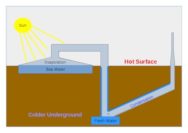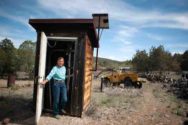
The Off-Grid Solution to Social Distancing (says Reuters)
Couple living alone in wilderness for decades -REUTERS SPECIAL REPORT-
SOMEWHERE NEAR RESERVE, New Mexico, June 5 (Reuters) – To leave society behind was a wedding vow Wendell and Mariann spoke only to each other. It was a solemn one, though, and to save for it Mariann spent only $66 on her bridal gown. Once they were married on that winter day 35 years ago, they just started driving.
Wendell and Mariann Hardy had lived most of their lives in the fast-growing southwestern city of Tucson, Arizona. But each was drawn to solitude. Mariann began distance-running into the mountains on high desert trails. Even before they met, both relocated to log cabins up on Mt. Lemmon, the 9,157-foot peak in the Catalinas range that overlooks Tucson. Still, city types came up to party there on the weekends. It wasn’t isolated enough.
Wendell took a job installing windows at Mariann’s cabin. Shy at first, the two got to talking about how they weren’t made for crowded places. One afternoon, Mariann offered him gin and tonic. Just how far, Wendell asked her, would she be willing to go?
In search of solitude
The question, open-ended and thrilling, marked the beginning of a union between two people who sought solitude – and instead found a life alone together.
Decades later, a pandemic has thrust the concept of social distancing into the daily lexicon and lives of Americans. As the nation’s death toll from COVID-19 tops 100,000, a new reality has set in: With few effective treatments and no vaccine, maintaining distance from others in society is the only sure method of stopping the spread.
Few people are as accustomed to the rigors, or rewards, of sheltering-in-place as Wendell, 75, and Mariann, 69. Soon after their 1985 church wedding in Tucson, they started exploring the wildest reaches of the American West for a place to be on their own.
A jack of all trades, including driving race cars, Wendell had a knack for fixing up vehicles like their salvaged pickups and a 1978 Jeep. They’d load one up and scout out Arizona’s parched borderlands to the south, and its ponderosa pine forests up north.
You can tell something by how couples sit on bench seats in old pickup trucks. Some sit apart, at either window. Others, like Wendell and Mariann, sit close together, behind the steering wheel.
Their search ended in Catron County, New Mexico. It is among the most rural in the United States, bigger than some U.S. states. Elk outnumber people 4 to 1. Traffic is so sparse, the county doesn’t have a single stoplight. Some children wait for the school bus in wood and wire cages. These serve as a precaution, against the wolves.
Miles down a washed-out dirt road along the San Francisco River, they saw 25 acres for sale. The $40,000 stretch of land, 6,000 feet high and zoned …
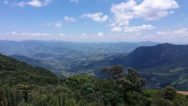


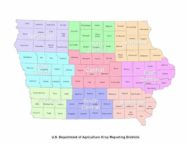
 An authoritative annual survey of cash
An authoritative annual survey of cash 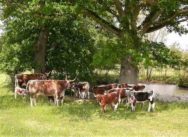


 We’re on our way to West Virginia for a low-tech weekend at promisingly-named Lost River State Park – just across the Virginia border in Mathias, West Virginia. Its chosen not only because the park sounds beautiful, with lots of hiking trails, but because the cellphone service is spotty at best there. Plus, we’ve been told that the cabin we’ll be staying in has no WiFi, which will prevent the intrusions of work, school, social obligations, politics.
We’re on our way to West Virginia for a low-tech weekend at promisingly-named Lost River State Park – just across the Virginia border in Mathias, West Virginia. Its chosen not only because the park sounds beautiful, with lots of hiking trails, but because the cellphone service is spotty at best there. Plus, we’ve been told that the cabin we’ll be staying in has no WiFi, which will prevent the intrusions of work, school, social obligations, politics.
